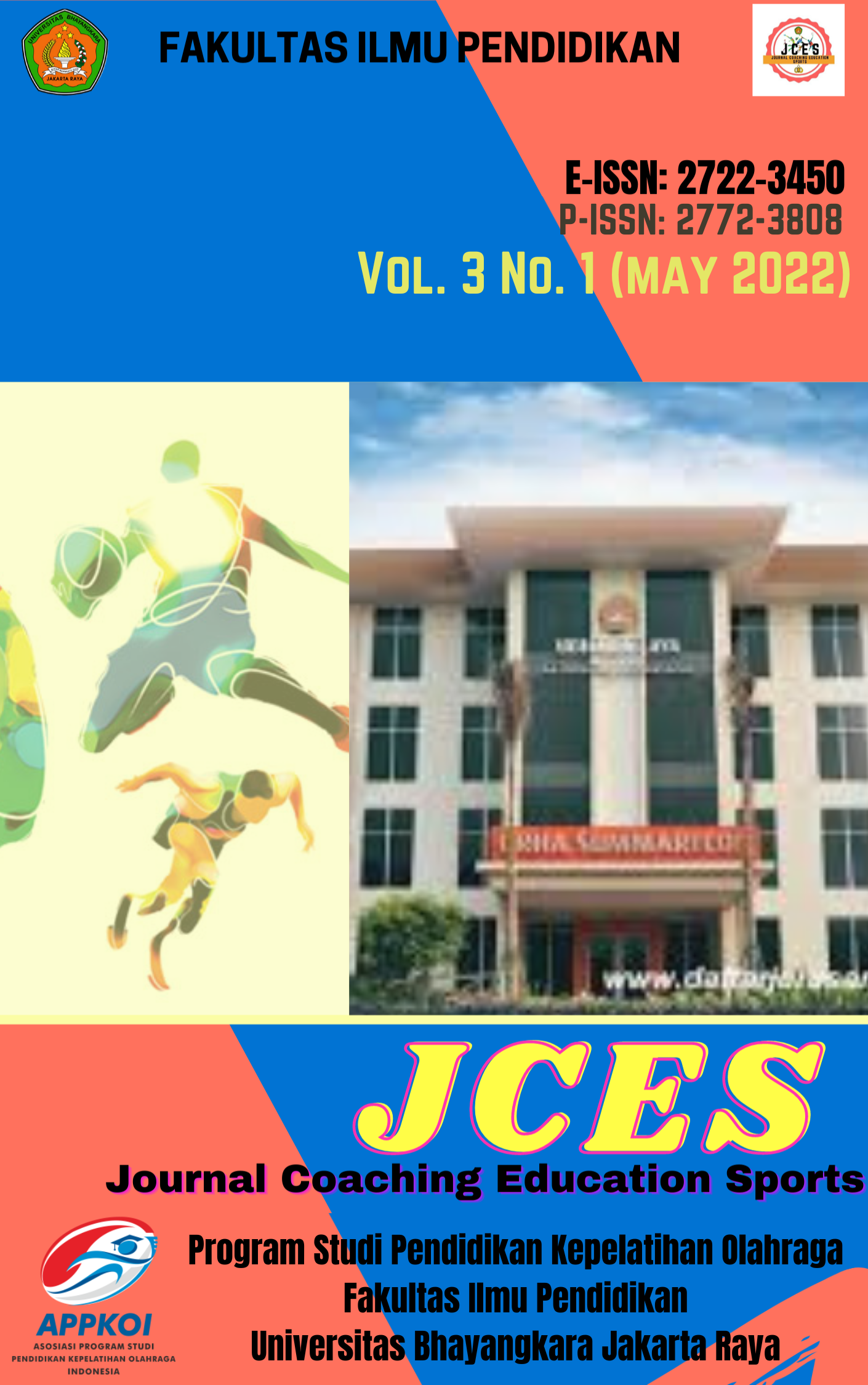Triple Jump Training Model Development based Circuit Training for Beginners Athletes
DOI:
https://doi.org/10.31599/99d5kw11Keywords:
Training Model, Triple Jump, Circuit TrainingAbstract
This study aims to develop a design for the triple jump to obtain empirical data about the effectiveness of the triple jump-based circuit training model for beginner athletes. The research method used in this study is the research and development method of Borg and Gall which consists of ten steps. The subjects of this study were male and female athletes in Klungkung regency specifically for triple jump numbers. This research resulted in 10 final training models that have gone through expert evaluations, trials, and revisions. In testing the effectiveness of the training model by using "test-t". The data of this research are in the form of the pretest and posttest of the experimental and control groups. Triple jump based on circuit training with a significance level of 0.05. The results of the average pretest mean = 59.05 are smaller than the average posttest mean = 73.40 in the count an increase of 14.36. The results of the effectiveness of the triple jump training model based on circuit training between pretest and posttest obtained results t0 = 11,145 greater than tt = 0,000, the hypothesis was rejected. Research conclusion that the triple jump based on the circuit training model for beginner athletes is effectively used to improve the triple jump results for beginner athletes.
Downloads
References
Bompa, T. O., & Haff, G. G. (2009). Periodization: Theory and Methodology of Training. Champaign, Ill. : Human Kinetics;
Budi, M. F. S., & Sugiharto. (2015). Circuit Training dengan Rasio 1:1 dan Rasio 1:2 terhadap Peningkatan VO2Max. Journal of Sport Sciences and Fitness, 4(3).
Dr. Emral, M. P. (2017). Pengantar Teori dan Metodelogi Melatih Fisik (Pertama). Depok: Kencana.
Gall, M. D., Gall, J. P., & Borg, W. R. (2003). Educational research: An introduction (7th ed.). Boston, MA: A & B Publications.
Hartoto, S. (2018). Pengaruh Latihan Piramida Descending dengan irama lambat dan cepat terhadap Kekuatan, Kecepatan, Daya ledak dan Hypertropy Otot tungkai. JOSSAE : Journal of Sport Science and Education. https://doi.org/10.26740/jossae.v2n2. p58-60
Johansyah Lubis. (2013). Panduan Praktis Penyusunan Program Latihan (Pertama). Jakarta: Jakarta Rajawali Press.
Julianto, I. (2016). Upaya Meningkatkan Kebugaran Jasmani Melalui Sirkuit Training Kids pada Siswa. JUARA : Jurnal Olahraga. https://doi.org/10.33222/juara.v1i1.56Juntara, P. E. (2019). LATIHAN KEKUATAN DENGAN BEBAN BEBAS METODE CIRCUIT TRAINING DAN PLYOMETRIC. Altius: Jurnal Ilmu Olahraga Dan Kesehatan. https://doi.org/10.36706/altius.v8i2.8 705
Kresnapati, P. (2019). PENGARUH POLA LATIHAN LOMPAT KIJANG TERHADAP HASIL LOMPAT JANGKIT MAHASISWA PUTRA PJKR UPGRIS. JOURNAL OF SPORT COACHING AND PHYSICAL EDUCATION. https://doi.org/10.15294/jscpe.v3i1.31 883
Makorohim, M. F. (2018). Performa Gerak Teknik Lompat Jangkit Pada Mahasiswa Penjaskesrek Semester 4 Universitas Islam Riau. JOURNAL SPORT AREA. https://doi.org/10.25299/sportarea.20 18.vol3(1).1570
Sukadiyanto. (2011). Pengantar Teori dan Metodologi Melatih Fisik (Cetakan Ke). Bandung: Lubuk Agung.
Wahyudi, A. N. (2018). Pengaruh Latihan High Intensity Interval Training ( Hiit ) Dan Circuit Training Terhadap Kecepatan , Kelincahan , Dan Power Otot Tungkai, 1(2). https://doi.org/doi.org/10.26740/jses. v1n2.p47-56
Yudiana, Y., Subardjah, H., & Juliantine, T. (2007). Latihan Fisik. Fpok-Upi, (1), 2. https://doi.org/10.1007/s13398- 014-0173-7.2
Downloads
Published
Issue
Section
License
Copyright (c) 2022 I Gede Angga Andika, Moch Asmawi

This work is licensed under a Creative Commons Attribution 4.0 International License.






.png)







